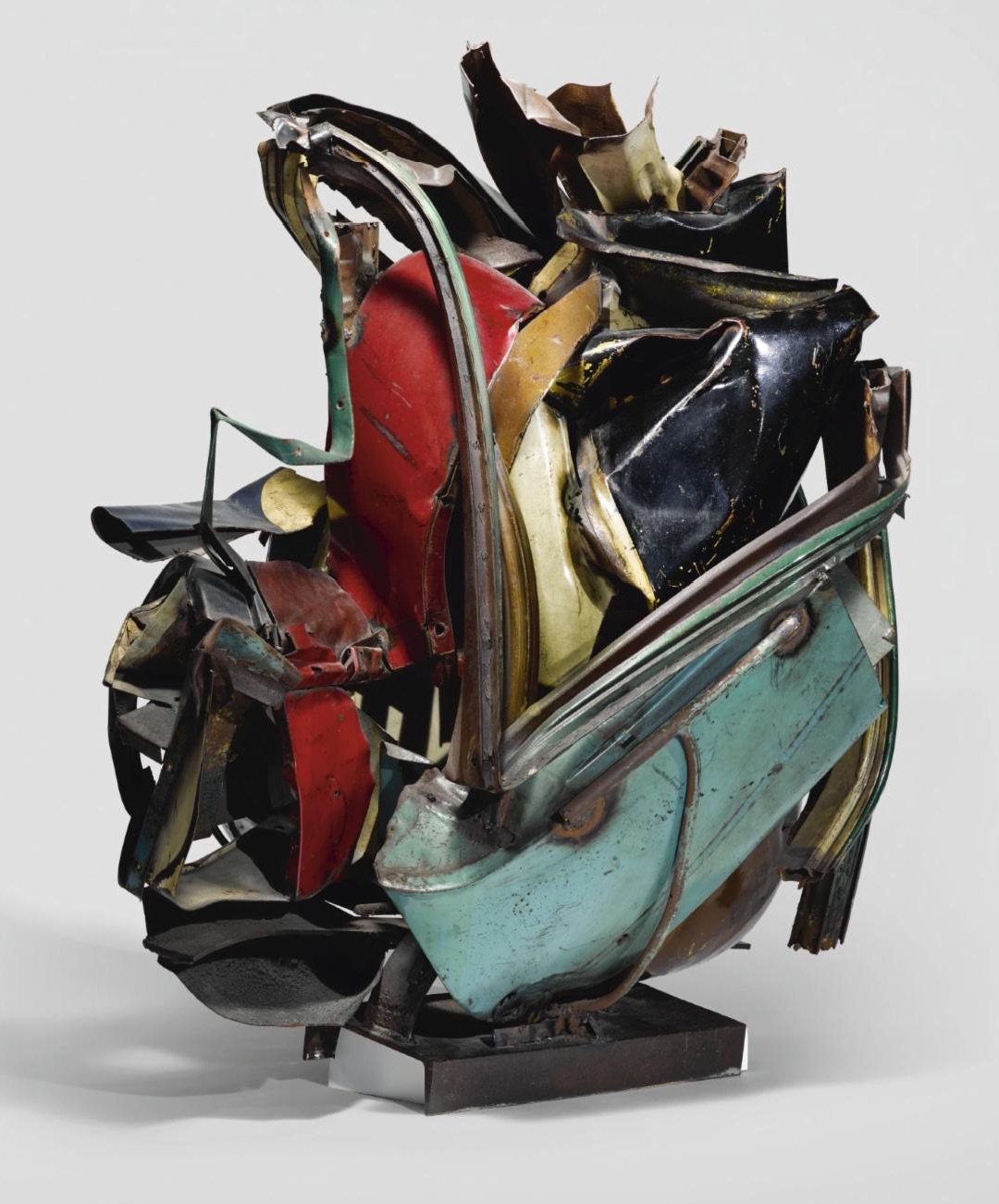Image: John Chamberlain, Nutcracker, 1958
In writing of automobiles and the art market, one is awed by the dizzying prices achieved these days at auction for the rarest models: a 1956 Aston Martin DBR1/1 sells for $22,500,000, a 1962 Ferrari 330 LM/GTO brings $51.7 million. This market seems to have exploded into a carnival of flashy, frenzied, record-breaking sales, many of these at palmy resorts in Miami, Pebble Beach and Amelia Island. And while such venues lend a members-only, country club aura to car collecting, there is also a blue-collar side.
It involves cars that—one might say—died and came back to life.
Try to visualize, for a moment, the millions of automobiles that have rolled off assembly lines through the decades, and the car companies—like Packard, Pierce-Arrow, Bugatti, Nash, Auburn and Studebaker—that once flourished and yet failed. Then imagine the millions of wrecked or worn-out cars that have wound up in junk yards, stacked in mountainous piles, waiting to be cannibalized for spare parts or crushed as scrap metal. It’s a massive recycling enterprise.
But if the art market specializes in anything, it is recycling.
Which leads us to John Chamberlain (1927-2011), an artist who made a brilliant career out of fashioning salvaged automobile parts—fenders, bumpers and the chassis—into mangled, heavy-metal, abstract expressionist sculpture. These strange and iconic works—containing possibly scraps from grisly road accidents—cast a mystifying, unsettling spell on viewers.
And yet, in the silky, rhapsodic lingo of an auction house catalogue, a Chamberlain sculpture of 1958 entitled Nutcracker (pictured above) is described as something almost magical: The juxtaposition of curves and hard edges, solid metal facets and negative space, bold color and worn surface coalesce in a single dynamic gestalt. What a fabulous prose poem to junked auto parts transformed into art — and which sold for $4.8 million!
But what about a complete automobile that died and came back from the dead?

By way of example, I am thinking of a 1960 Jaguar XK150 S 3.8-Litre Drophead Coupe (illustrated here). As the story goes, the car spun off the road in 1996 and crashed into a tree. Probably stunned and unwilling to see the car towed off to a junk yard, but also uncertain how the car might be salvaged, the owner put it in storage. There it remained, rusting away for 25 years, only recently making its appearance at a Bonhams automobile auction.
But wait. This car was essentially a wreck. Even if it had all its original parts, what was it doing in a vintage car sale?
The answer is simple: in a market bursting with success and devouring everything coming to auction, there was a fresh opportunity for a car like this, despite its crumpled and caved-in condition. It simply had to be marketed in the right way.
And so Bonhams described the car for what it was: a Project.
Here was a whole new collecting category, offering highly collectible vintage cars needing extensive restoration. And in the case of the 1961 Jaguar, someone was willing to pay £90,500—six times the pre-sale auction estimate—for the opportunity.
How sad to think that this “Project” car might otherwise have been relegated to a junk yard, providing spare parts for one of John Chamberlain’s eerie sculptures.

